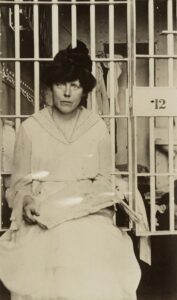
The Lorton Prison was one of the first abandoned sites I explored after I discovered there was an entire community of “urban explorers” who liked photographing abandoned buildings. At time, I had no real clue how to capture these buildings and had entry level camera equipment.
Lorton: One of the Most Corrupt and Dangerous Prisons In The Country
Originally named The Occoquan Workhouse in Lorton, Virginia was a jail facility used by the District of Columbia. Built in 1910, it housed prisoners serving short sentences for minor offenses. Inmates were put to work in agriculture and factory production.
The Workhouse was eventually expanded to house inmates convicted of more serious crimes in a walled penitentiary style setting, forgoing the previous workhouse theme. It would then be renamed “Lorton Reformatory”.
Lorton Reformatory has a very notorious past, and at one time was the main prison for the District of Columbia. It sat on 1,100 acres and even had its own railroad up until the 1970s. The penitentiary buildings of the 1930s were constructed by the prisoners themselves, using brick manufactured at the on-site kiln complex from Occoquan River clay. Notable inmates of the prison included famous musician Chuck Brown, Lucy Burns, Petey Green, Laura Houghtaling Ingalls, and FBI agent George Gordon Liddy.
This prison was known as a place where “only the strong survived.” The maximum-security wing was home to a lockdown unit nicknamed the “House of Pain,” It was arguably one of the most corrupt prison systems of its time, with stories from inmates that are almost hard to believe. These stories include tales of family members that were guards (which gave inmates access to almost anything they wanted, including weapons and drugs), prostitution (including the female guards), corrupt guards, and a high murder rate. Lorton Prison became increasingly violent and corrupt as it housed many violent criminals of DC’s drug business and gang members. Then there’s the story, that allegedly on Christmas night in 1996, an inmate escaped, by being waved through the gates by a friendly corrections officer. That was the 7th escape….just that year.
A Night of Terror and the Silent Sentinels

During the 1960s, prominent national suffragists were arrested from their “Silent Sentinels” pickets at the White House and held at the Occoquan Workhouse. Approximately 168 women were mistreated at the workhouse. November 14, 1917, is known as the “Night of Terror” because of how badly these suffragist prisoners were tortured, beaten, and abused.
In June of 1917, the Silent Sentinels began picketing for women’s voting rights outside the White House. These groups of women were led by Alice Paul and Lucy Burns, two of the top leaders in the National Woman’s Party. On the night of November 14, they were arrested and taken to Lorton Reformatory, where warden W.H. Whitaker would introduce them to a new kind of torture and abuse.
According to reports from news sources, the women were chained and beaten, had their heads smashed into iron bed frames, and one 74 year old woman was stabbed with piece of her sign she used to picket with at the White House.
Lucy Burns, was left alone with her arms handcuffed to a bar above her head overnight, and left naked in a freezing cold cell the following day. The other leader Alice Paul, planned a hunger strike, but was force fed raw eggs through a tube that was forced down her throat. The rest of the women endured more abuse and mistreatment, and were fed rancid food. One of the women later told of her experience: “The beans, hominy, rice, cornmeal…and cereal have all had worms in them,” Virginia Bovee reported from jail. “Sometimes the worms float on top of the soup.”
This continued until they were finally released. This was due to help of Dudley Field Malone, an official on President Wilson’s administration team, and the husband of one of the prisoners,. He shared accounts of the violence with the press and told the story of what was happening within the jail. Two weeks later, a judge ordered the prisoners released, and eventually vacated their convictions. Suffragist prisoner Doris Stevens wrote about the women’s experiences in her book, “Jailed For Freedom.”
The Closing of Lorton Reformatory
The Lorton Reformatory was closed in 1999, and the last prisoners were removed in late 2001. Today, many of the former prison buildings have been turned into swanky homes, a museum, and retail space.
The Lorton Reformatory Campus Today
Most of the buildings have been repurposed, and the former prison is now an upscale, luxury urban village called “Liberty”. The village features a live/shop lifestyle. For more on the reuse and re-adaptation of this prison, visit the Liberty website.
